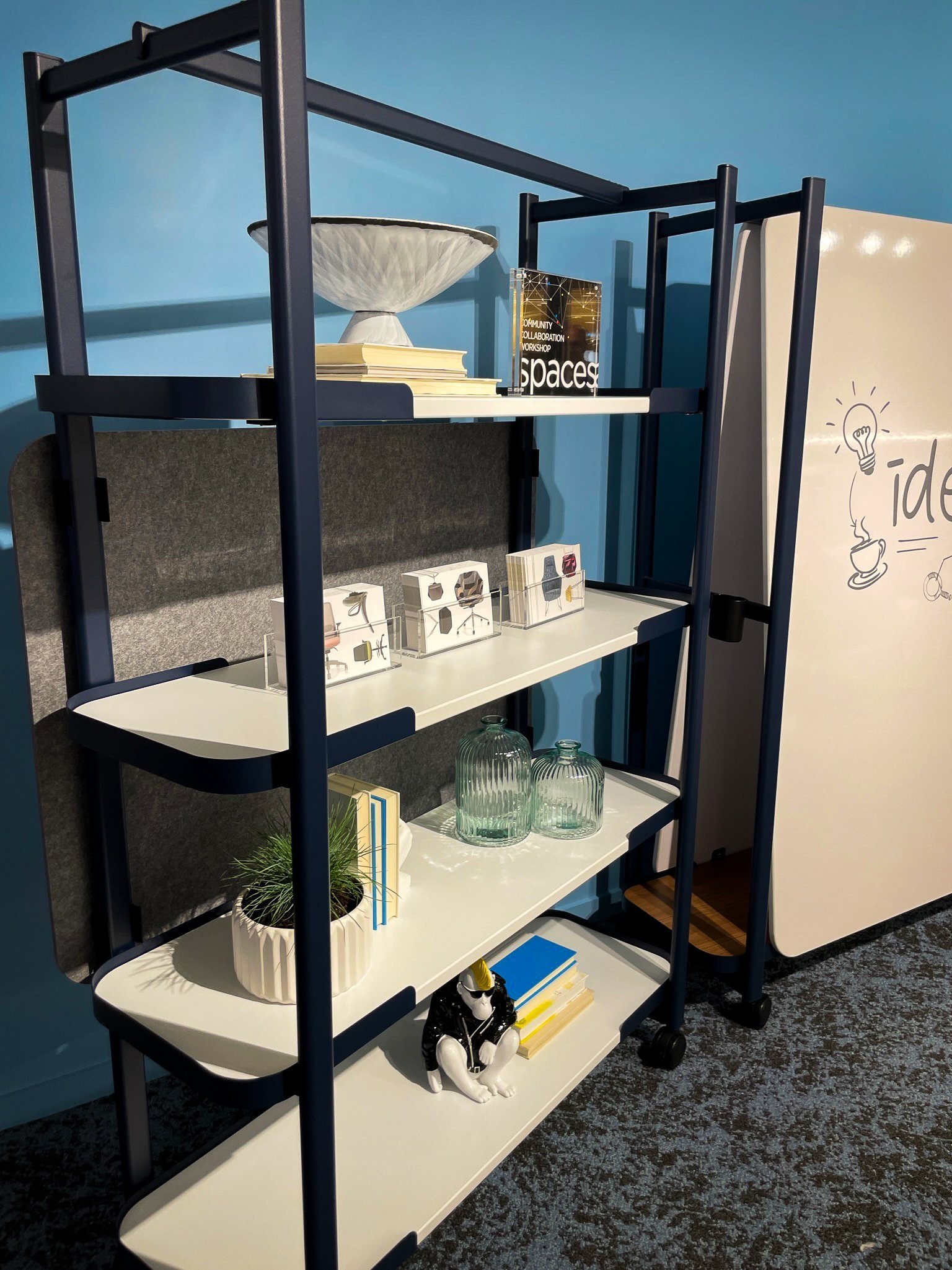Exploring Post-Neocon perspectives | Part 1
Let’s set the stage for you. It’s 9:00 am on a Monday morning and today is an in-office workday, but your calendar is filled with back-to-back meetings and zero down time to breathe or socialize with your colleagues. You find yourself constantly moving between working, meetings, and collaboration time. All these rapid shifts are a daily reality, and you find yourself moving from one office space to another based on the necessity of your work mode. This is typically by scooping up laptops, floorplans, and coffee mugs and lugging them from room to room. But what if you could simply slide them across the table? What if there was an all-in-one system that made switching work modes as simple as moving over to the next seat beside your colleague who is ready to collaborate?
The introduction of the Morse Table System by NaughtOne during the Fulton Market Design Days showcased the flexibility and infinite possibilities that can solve the need we described above. Because hybrid is here to stay, the office continues to be a necessity. The Morse Table system serves multiple purposes in one day from a solo workspace to collaboration area. The Morse Table system fits in different markets such as universities, design studios, shared office spaces, and even airports and is one of the most customizable systems we’ve seen to promote a successfully flexible workspace.
This year NeoCon and Fulton Market Design Days showcased new products, like Morse, from manufacturers, highlighting the ever-changing role of workplace design, redefining flexibility, and solving real world challenges. The exhibition floors displayed many things, but the following insights were the most prevalent:
COLLABORATIVE AND FLEXIBLE FURNITURE FOR CROSS-GENERATIONAL SPACES
MOBILITY AND RECONFIGURABLE FURNITURE IS ESSENTIAL
GREEN IS KING- SUSTAINABILITY IS EVERYWHERE
SOCIAL + TECHNOLOGY= A WINNING COMBINATION
Collaborative and Flexible Furniture for Cross-Generational Spaces
In the ever-evolving commercial interiors industry, the concept of cross-generational spaces has gained significant value. With diverse age groups working together in modern workplaces, there is a growing need for furniture that promotes collaboration and flexibility. Collaborative and flexible furniture not only fosters teamwork and communication but also accommodates the varying needs and preferences of individuals across different generations.
MillerKnoll Design Days introduced the Fuld Nesting Chair designed by Stefan Deiz. The nesting chair is ideal for workshop spaces where the chairs can “nest” together when not in use to save space and allow for easy reconfiguration. Because of its contoured shape it allows users to remain comfortable as they shift around. Available late summer, so stay tuned!
Mobility and Reconfigurable Furniture is Essential
Movable and reconfigurable furniture has gained significant popularity, allowing spaces to serve multiple functions in a day and switch purposes in a matter of minutes. It has become essential in the commercial interior industry. Its adaptability, cost-effectiveness, and ability to repurpose your workspace on the fly make it an ideal choice for organizations aiming to create versatile spaces.
A great example of this was seen in the Global Furniture Group Showroom with Team Cart from their new spaces line launching this fall. Team Cart enables the creation of spaces where teams can collaborate and connect in a flexible work environment. In its basic form the cart is a coat rack and can be accessorized with shelves, white board panels, as well as tackable panels. The panels can be full size, they clamp on vertical rails that can be adjusted or stacked and be used on a coordinating wall track system. The cart can also be used in combination with a media unit, and it becomes a mobile media cart for presentations!
In Part 2 of this blog series, we will delve deeper into the next two insights from sustainability to the social + technology combination. Stay tuned for an exciting exploration of how technology, design, and sustainability are shaping the furniture of tomorrow.



